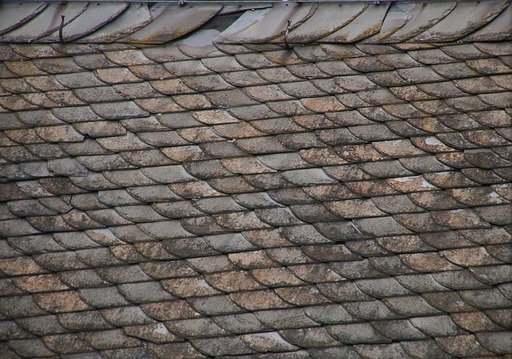
Embarking on a journey into the heart of remote landscapes is a thrilling adventure, often filled with the serenity of untouched nature. However, when the unexpected strikes in the form of water damage to insulation, the remoteness amplifies the challenge. Picture this: you find yourself in a secluded cabin nestled amidst the wilderness, and torrential rain breaches the sanctuary, saturating the very insulation meant to protect against the elements.
In this comprehensive guide, we delve into the intricacies of a scenario that demands both resilience and resourcefulness – drying water-damaged insulation in remote locations. Whether you’re a lone explorer, part of a wilderness expedition, or a humble dweller in a secluded village, the need to safeguard your living space from the aftermath of water intrusion is universal.
As we unfold the layers of this guide, we’ll navigate through the wilderness of challenges, offering not just solutions but a roadmap to restoration in the heart of the untouched, where nature is both your adversary and ally. Welcome to the journey of preserving shelter in the wild – a journey into the art of drying water-damaged insulation in remote locations.
See also our post on Top Water Damage Restoration Procedure
Know Your Insulation
1.1 Types of Insulation
Understanding the variety of insulation materials is crucial for effective drying.
1.2 Identifying Water-Absorbing Materials
Not all insulation materials respond the same way to water damage. Recognize those prone to absorbing water.
1.3 Assessing Damage Levels
Evaluate the extent of water damage to determine the appropriate course of action.
1.4 Safety Considerations
Prioritize safety. Identify potential hazards related to wet insulation and take precautionary measures.
1.5 Environmental Impact
Consider the surroundings and weather conditions in the remote location. Adapt your approach to the local environment.
Swift Extraction of Standing Water
2.1 Immediate Action
Act promptly to prevent further damage. Remove standing water using available tools and resources.
2.2 Improvised Tools
In remote areas, resourcefulness is key. Explore local materials to create makeshift tools for water extraction.
2.3 Gravity-Assist Techniques
Leverage the natural landscape to channel water away from the damaged area, aiding the drying process.
2.4 Collaborative Efforts
Engage local communities or fellow travelers to pool resources for efficient water removal.
2.5 Monitoring Progress
Regularly assess the effectiveness of water extraction methods to adjust your approach as needed.
Promoting Air Circulation
3.1 Natural Ventilation
Harness the power of wind by strategically placing openings to facilitate air circulation.
3.2 Improvised Ventilation Techniques
Create makeshift wind channels using available materials to enhance drying efficiency.
3.3 Removing Obstacles
Clear debris and obstacles to ensure unimpeded airflow through the damaged insulation.
3.4 DIY Ventilation Devices
Explore creative ways to develop basic ventilation devices, such as fans or wind-driven systems.
3.5 Utilizing Fire
In a controlled manner, use fire to generate updrafts and improve air circulation for faster drying.
Utilizing Sunlight
4.1 Sun as a Natural Drying Agent
Maximize sunlight exposure to accelerate the drying process.
4.2 Reflective Techniques
Enhance sunlight absorption by using reflective surfaces strategically placed around the damaged area.
4.3 Rotational Adjustments
Periodically reposition the insulation to ensure all sides receive adequate sunlight exposure.
4.4 Shade Management
Prevent overheating and potential damage by providing intermittent shade during the hottest parts of the day.
4.5 Weather Monitoring
Stay informed about the local weather patterns to optimize sunlight utilization.
See also our post on Water Damage Restoration Guide: How to Restore Property After a Disaster
Employing Dehumidifiers
5.1 Improvised Dehumidification
Craft makeshift dehumidifiers using locally available materials and absorbents.
5.2 Solar-Powered Dehumidifiers
Explore solar-powered options to harness renewable energy for dehumidification.
5.3 Moisture Absorption Techniques
Integrate natural moisture-absorbing substances like charcoal or desiccants to expedite the drying process.
5.4 Enclosed Drying Spaces
Create enclosed spaces to focus dehumidification efforts on specific areas.
5.5 Periodic Maintenance
Regularly check and adjust dehumidifiers to maintain optimal performance.
Mold Prevention
6.1 Early Intervention
Act swiftly to prevent mold growth by addressing water damage promptly.
6.2 Natural Antimicrobials
Explore natural substances with antimicrobial properties to inhibit mold growth.
6.3 Ventilation as a Preventive Measure
Sustain continuous airflow to deter mold formation in damp conditions.
6.4 Surface Cleaning
Regularly clean surfaces exposed to water to minimize the chances of mold development.
6.5 Monitoring and Readjustment
Keep a vigilant eye on potential mold growth and adjust your drying methods accordingly.
Documenting and Reporting
7.1 Record Keeping
Maintain a detailed log of the water damage, actions taken, and progress made.
7.2 Photographic Documentation
Capture images to visually document the condition of the insulation for future reference.
7.3 Reporting to Authorities
If applicable, report the water damage to local authorities or relevant organizations.
7.4 Community Awareness
Share your experience and knowledge with the local community to build resilience against future water damage.
7.5 Leave No Trace
Ensure the area is left in its original state, minimizing any impact on the environment.
See also our post on Detailed Water Damage Restoration Guide: Step-by-Step Approach
Conclusion:
You need a combination of creativity, flexibility, and practical knowledge to successfully dry water-damaged insulation in remote areas. By learning about the insulation, putting effective drying methods into practice, and encouraging preventive measures, you can help preserve remote environments sustainably while restoring the damaged area. After all, when faced with hardship, creativity becomes your greatest asset.






